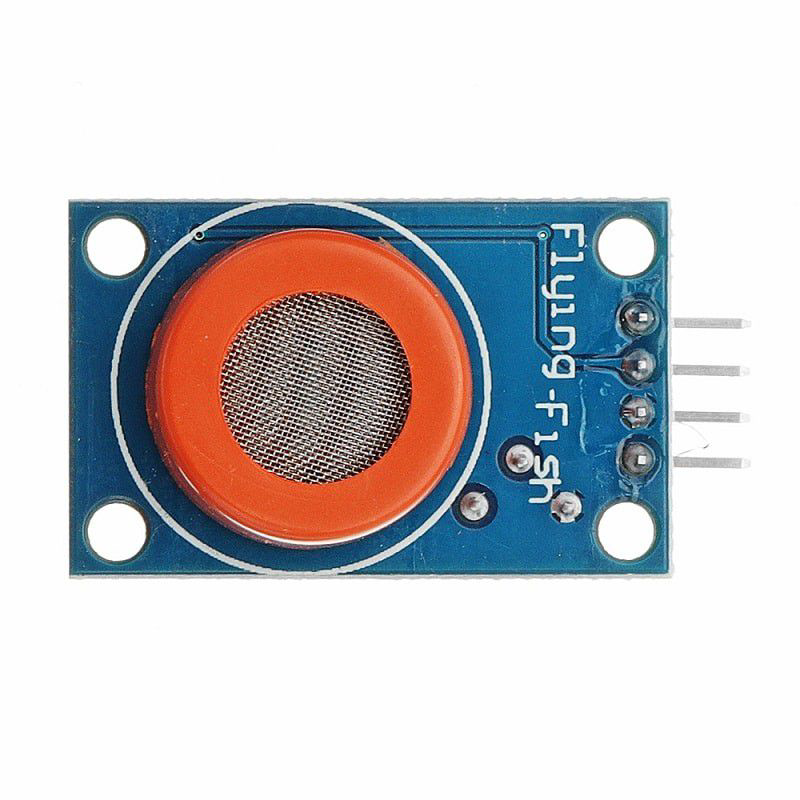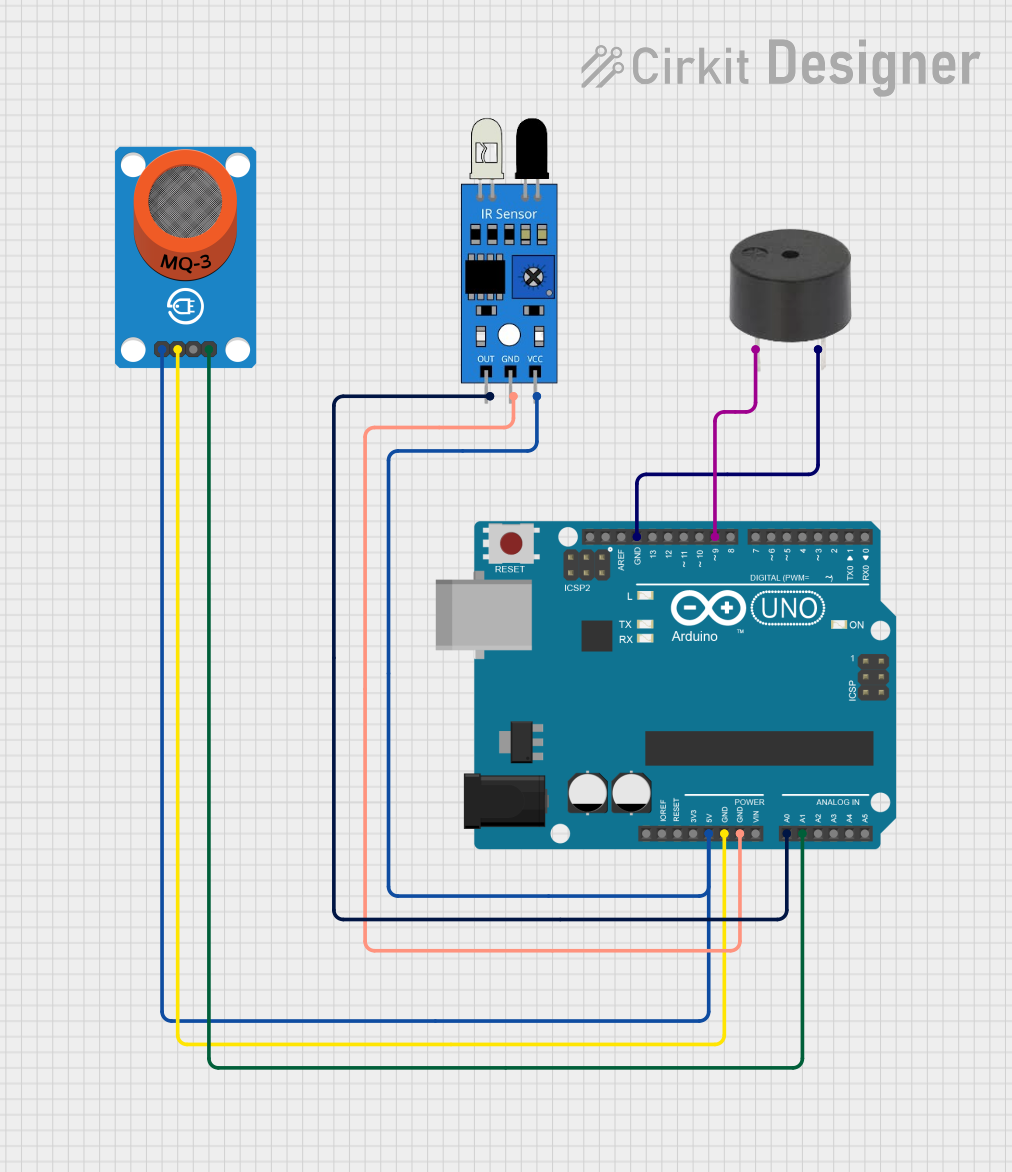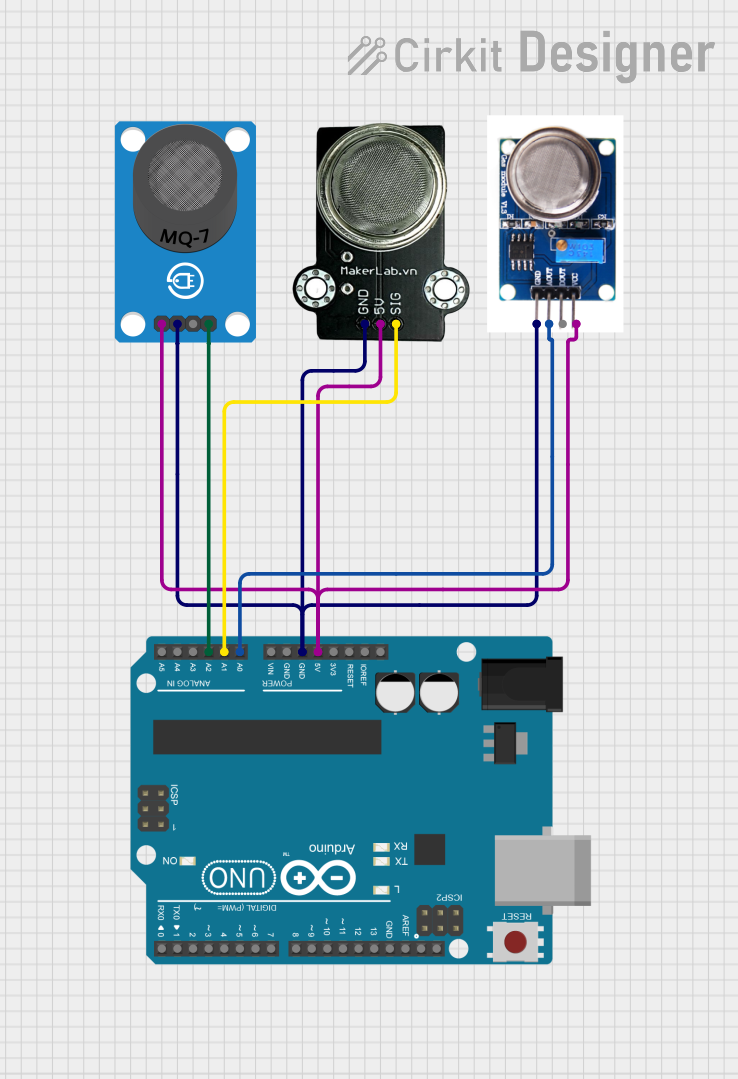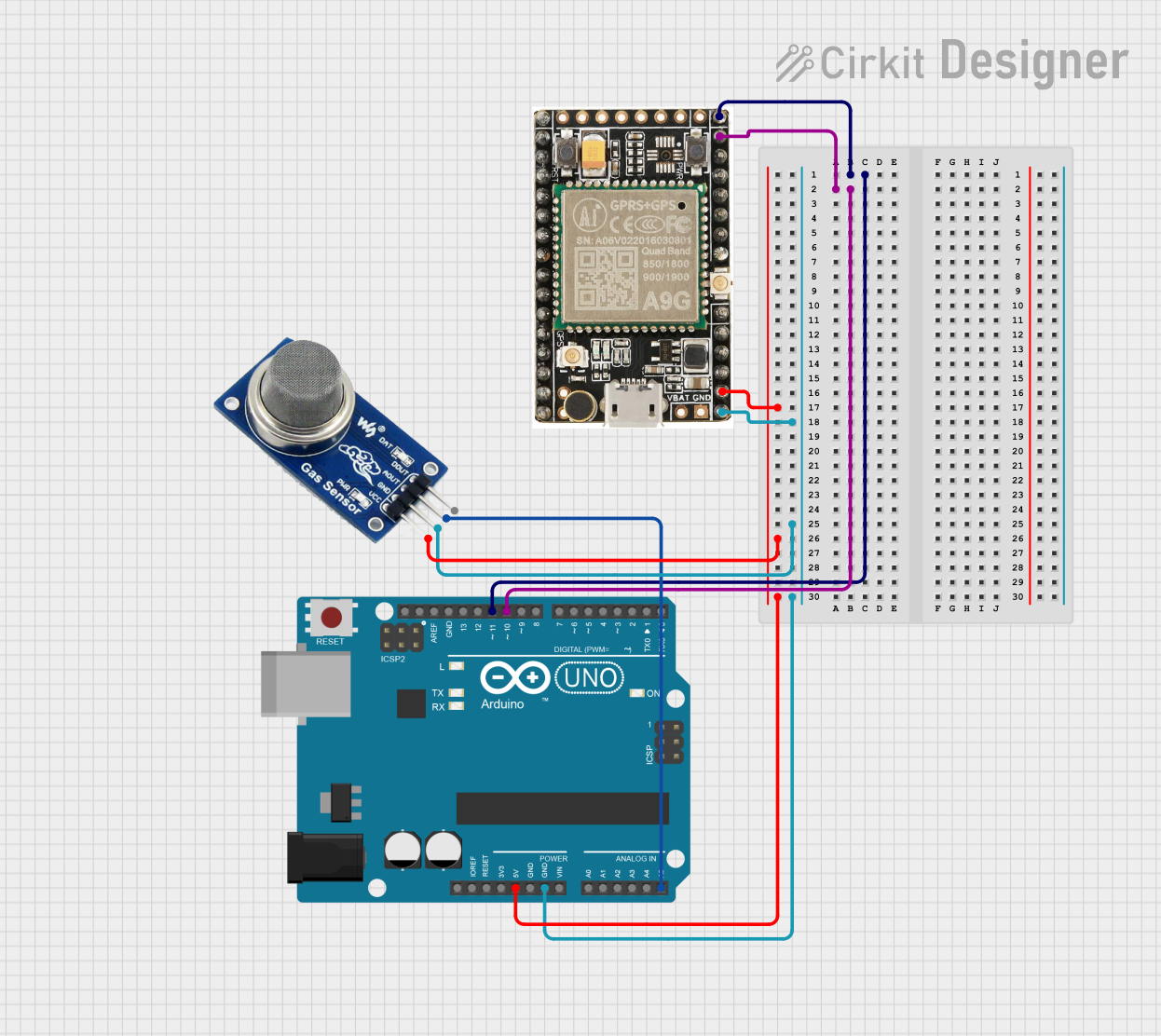
How to Use MQ-3: Examples, Pinouts, and Specs

 Design with MQ-3 in Cirkit Designer
Design with MQ-3 in Cirkit DesignerIntroduction
The MQ-3 is a gas sensor designed to detect alcohol vapors in the air. It operates on the principle of resistive change, where the sensor's resistance varies in the presence of specific gases. The MQ-3 provides an analog output proportional to the concentration of alcohol vapors, making it suitable for a wide range of applications.
Explore Projects Built with MQ-3

 Open Project in Cirkit Designer
Open Project in Cirkit Designer
 Open Project in Cirkit Designer
Open Project in Cirkit Designer
 Open Project in Cirkit Designer
Open Project in Cirkit Designer
 Open Project in Cirkit Designer
Open Project in Cirkit DesignerExplore Projects Built with MQ-3

 Open Project in Cirkit Designer
Open Project in Cirkit Designer
 Open Project in Cirkit Designer
Open Project in Cirkit Designer
 Open Project in Cirkit Designer
Open Project in Cirkit Designer
 Open Project in Cirkit Designer
Open Project in Cirkit DesignerCommon Applications and Use Cases
- Breath analyzers for alcohol detection
- Gas leak detection systems
- Industrial safety equipment
- Home safety devices
- Embedded systems for environmental monitoring
Technical Specifications
The MQ-3 sensor is a compact and reliable device with the following key specifications:
| Parameter | Value |
|---|---|
| Operating Voltage | 5V DC |
| Load Resistance (RL) | 200 kΩ to 10 kΩ |
| Heater Voltage (VH) | 5V ± 0.2V AC/DC |
| Heater Power Consumption | ≤ 800 mW |
| Detectable Gas | Alcohol vapors |
| Detection Range | 0.04 mg/L to 4 mg/L (alcohol) |
| Preheat Time | ≥ 24 hours for optimal performance |
| Analog Output | 0V to 5V (proportional to gas concentration) |
| Operating Temperature | -20°C to 50°C |
| Humidity Range | 35% to 85% RH |
| Sensor Life Span | ≥ 2 years |
Pin Configuration and Descriptions
The MQ-3 sensor typically comes with six pins, but only four are commonly used. Below is the pin configuration:
| Pin Name | Description |
|---|---|
| VCC | Power supply pin (5V DC) |
| GND | Ground pin |
| AOUT | Analog output pin (provides gas concentration) |
| DOUT | Digital output pin (threshold-based output) |
| H1, H2 | Heater pins (internally connected in modules) |
Note: In most breakout boards, the heater pins (H1 and H2) are internally connected, so you only need to connect VCC, GND, AOUT, and optionally DOUT.
Usage Instructions
How to Use the MQ-3 in a Circuit
Power the Sensor:
- Connect the VCC pin to a 5V DC power supply.
- Connect the GND pin to the ground of your circuit.
Read the Output:
- Use the AOUT pin to read the analog voltage, which corresponds to the alcohol vapor concentration.
- Optionally, use the DOUT pin for a digital HIGH/LOW signal if a threshold is set.
Preheat the Sensor:
- Allow the sensor to preheat for at least 24 hours before taking accurate readings. This ensures the internal heater stabilizes.
Calibrate the Sensor:
- Use a known alcohol concentration to calibrate the sensor for precise measurements.
- Adjust the load resistance (RL) to fine-tune the sensitivity.
Connect to a Microcontroller:
- The MQ-3 can be interfaced with microcontrollers like Arduino UNO for real-time monitoring and data processing.
Important Considerations and Best Practices
- Preheating: Always preheat the sensor for accurate and stable readings.
- Ventilation: Ensure proper ventilation around the sensor to avoid saturation.
- Load Resistance: Choose an appropriate RL value based on your application. Lower RL increases sensitivity but reduces the range.
- Avoid Contamination: Keep the sensor away from water, oil, and other contaminants that may damage it.
- Power Supply: Use a stable 5V power source to avoid fluctuations in readings.
Example: Connecting MQ-3 to Arduino UNO
Below is an example of how to connect and use the MQ-3 sensor with an Arduino UNO:
Circuit Connections
- Connect the MQ-3's VCC to the Arduino's 5V pin.
- Connect the MQ-3's GND to the Arduino's GND pin.
- Connect the MQ-3's AOUT to the Arduino's A0 pin.
Arduino Code
// MQ-3 Alcohol Sensor Example with Arduino UNO
// Reads analog output from the sensor and prints alcohol concentration
const int sensorPin = A0; // MQ-3 analog output connected to A0
int sensorValue = 0; // Variable to store sensor reading
void setup() {
Serial.begin(9600); // Initialize serial communication at 9600 baud
Serial.println("MQ-3 Alcohol Sensor Test");
}
void loop() {
sensorValue = analogRead(sensorPin); // Read analog value from MQ-3
float voltage = sensorValue * (5.0 / 1023.0); // Convert to voltage
// Print the sensor value and voltage to the Serial Monitor
Serial.print("Sensor Value: ");
Serial.print(sensorValue);
Serial.print(" | Voltage: ");
Serial.print(voltage);
Serial.println(" V");
delay(1000); // Wait 1 second before next reading
}
Note: The analog value from the sensor can be mapped to alcohol concentration using a calibration curve, which depends on the specific application.
Troubleshooting and FAQs
Common Issues and Solutions
No Output or Incorrect Readings:
- Cause: Insufficient preheating time.
- Solution: Allow the sensor to preheat for at least 24 hours before use.
Fluctuating Readings:
- Cause: Unstable power supply or environmental interference.
- Solution: Use a regulated 5V power source and ensure proper ventilation.
Sensor Not Responding to Alcohol Vapors:
- Cause: Sensor contamination or damage.
- Solution: Replace the sensor if it has been exposed to water, oil, or other contaminants.
Digital Output Always HIGH/LOW:
- Cause: Incorrect threshold setting.
- Solution: Adjust the potentiometer on the breakout board to set the desired threshold.
FAQs
Q1: Can the MQ-3 detect gases other than alcohol?
A1: The MQ-3 is optimized for alcohol detection but may respond to other gases like benzene or methane. However, its sensitivity to these gases is lower.
Q2: How do I calibrate the MQ-3 sensor?
A2: Use a known alcohol concentration to measure the sensor's output and create a calibration curve. Adjust the load resistance (RL) for fine-tuning.
Q3: What is the lifespan of the MQ-3 sensor?
A3: The sensor typically lasts for 2 years under normal operating conditions.
Q4: Can I use the MQ-3 with a 3.3V system?
A4: The MQ-3 requires a 5V power supply for the heater. You can use a level shifter to interface the analog output with a 3.3V system.
Q5: Is the MQ-3 safe for continuous operation?
A5: Yes, the MQ-3 is designed for continuous operation, but ensure proper ventilation to avoid overheating.